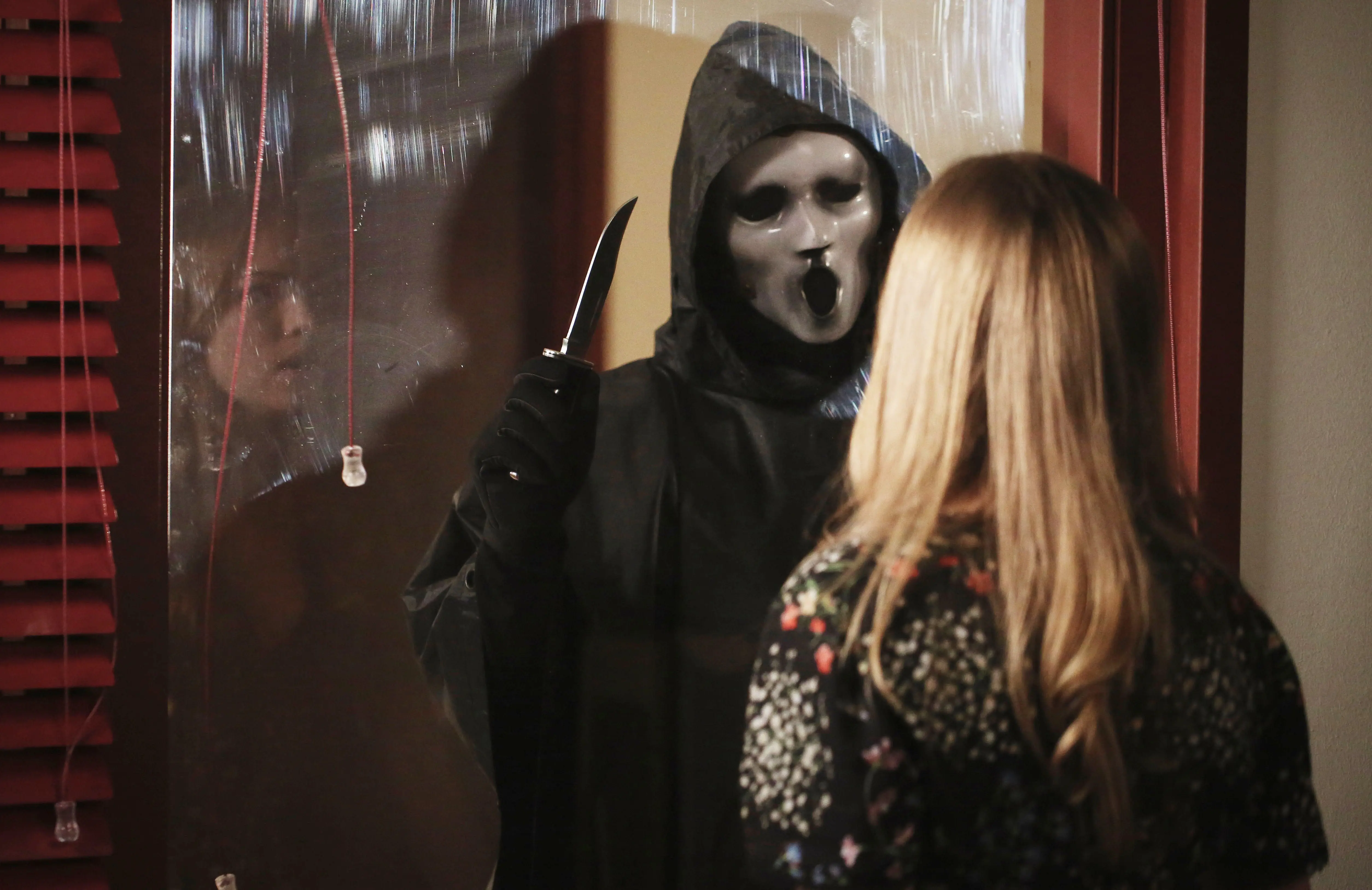Why the Defunct Scream TV Series Is Still Worth Your Time
-
 Ghostface and Emma (Willa Fitzgerald) in Scream (Photo: Eliza Morse/Everett Collection)
Ghostface and Emma (Willa Fitzgerald) in Scream (Photo: Eliza Morse/Everett Collection)The Scream franchise is a cultural phenomenon that not only redefined the horror genre, but also paved the way for a new wave of self-aware, meta-horror films. Released in 1996, the first Scream film was a critical and commercial success that revitalized the slasher subgenre. But more than just a successful horror movie, Scream was a game-changer that broke the rules and deconstructed the very genre it was part of, creating a legacy that continues to influence horror filmmaking today.
After an 11-year gap, the Scream franchise made its way back into the mainstream with a fifth installment, though this time without Wes Craven’s magic touch. Ready or Not directors Matt Bettinelli-Olpin and Tyler Gillett managed to lend their modern vision while maintaining Craven’s legacy as the reboot followed a new cast of Woodsboro teens. And it turned out to be a box-office success, leading to another highly anticipated sequel, Scream 6, which hits theaters on March 10, a little over a year after the fifth movie’s release.
In all the discussion of the Scream franchise, there’s one installment that continues to fall through the cracks. MTV’s Scream adaptation, an anthology series that ran from 2015 to 2019, followed the lives of a group of teenagers who are tormented by a series of gruesome murders. The first two seasons take place in the fictional town of Lakewood and centers around Emma Duval (Willa Fitzgerald), the show’s own Sidney Prescott and the daughter of Maggie and Kevin Duval, the two survivors of the town’s notorious Brandon James murders. When a mysterious new killer emerged under Brandon’s mask, Emma and her friends found themselves caught in the middle of a dark conspiracy linked with her past.
Scream the TV series has continued to face a degree of skepticism from fans of the original films, many of whom have dismissed it as a cheap knockoff. However, the show is gifted with something that a typical feature film is not — the luxury of time. The long-form storytelling format allows it to function as a successful teen show that weaves in high school melodrama seamlessly, exploring generational trauma, identity, and the impact of social media on modern-day society alongside the classic slasher elements.
The slow-burn narrative serves Emma especially well, as it provides proper room for writers to subvert audience expectations on what a typical final girl looks like. In film, we don’t really get the opportunity to explore the aftermath of the killings. Season 2 actively details how Lakewood has been processing the events — in particular, how Emma’s PTSD has led to hallucinations, panic attacks, and nightmares that become intensified by a second round of murders.
Viewers are also able to form relationships with the core characters before their potential demise. It’s a departure from the traditional slasher formula, which typically focuses on disposable characters who are killed off quickly without any development. In Season 1, Emma’s ex-boyfriend Will (Connor Weil) and his best friend Jake (Tom Maden) are introduced as typical high school jocks. We later discover that the two were lured into a sex blackmailing scheme by their fellow classmate, and Will spends the season reckoning with his guilt. Ultimately, Will faces a particularly violent death, which sees him tied in a chair attached to a large, saw-like machine. Emma accidentally triggers Will’s death by tripping over a wire attached to a lever, and she is forced to watch the machine slice through his skull. Similarly, Jake transforms from a shallow, self-obsessed pretty boy into a lovable himbo, and his growing relationship with Brooke (Carlson Young) becomes the show’s leading ship. However, the show rips them apart fairly quickly, keeping him chained in a bear trap and later disemboweled by a scythe very early into Season 2.
It’s difficult to pull off a successful whodunit, especially within the trope-laden teen drama landscape. Nevertheless, the series successfully misdirects viewers about who the killer might be. Each character harbors their own set of dark secrets that could make them capable of murder, which makes the guessing game all the more fun. In particular, the Season 2 reveal of Emma’s boyfriend, Kieran (Amadeus Serafini) as the killer was an obvious nod to the original films. While it was anticipated (and a bit rushed), the reveal remained fairly satisfying, given its clear homage to Billy Loomis’ (Skeet Ulrich) alter ego as Ghostface (along with his buddy Stu, played by Matthew Lillard) in the first Scream movie.
The Scream TV series, while distinct from the films in its approach, remains an underrated and worthy addition to the iconic franchise. In the first two seasons, the long-form storytelling serves the high school melodrama to its benefit as it provides more time for audiences to bond with the characters, delivering a solid teen drama that embraces the genre’s soapiness while still poking fun at (and even expanding upon) the tropes. With its intriguing characters, suspenseful plot twists, and high-stake kills, the Scream TV series has something to offer franchise diehards and newcomers alike.
All three seasons of Scream are streaming on Netflix. Join the discussion about the show in our forums.
Dianna Shen is a TV Writer at Primetimer based in New York. Her work has been featured in Paste Magazine and Decider, among other outlets.